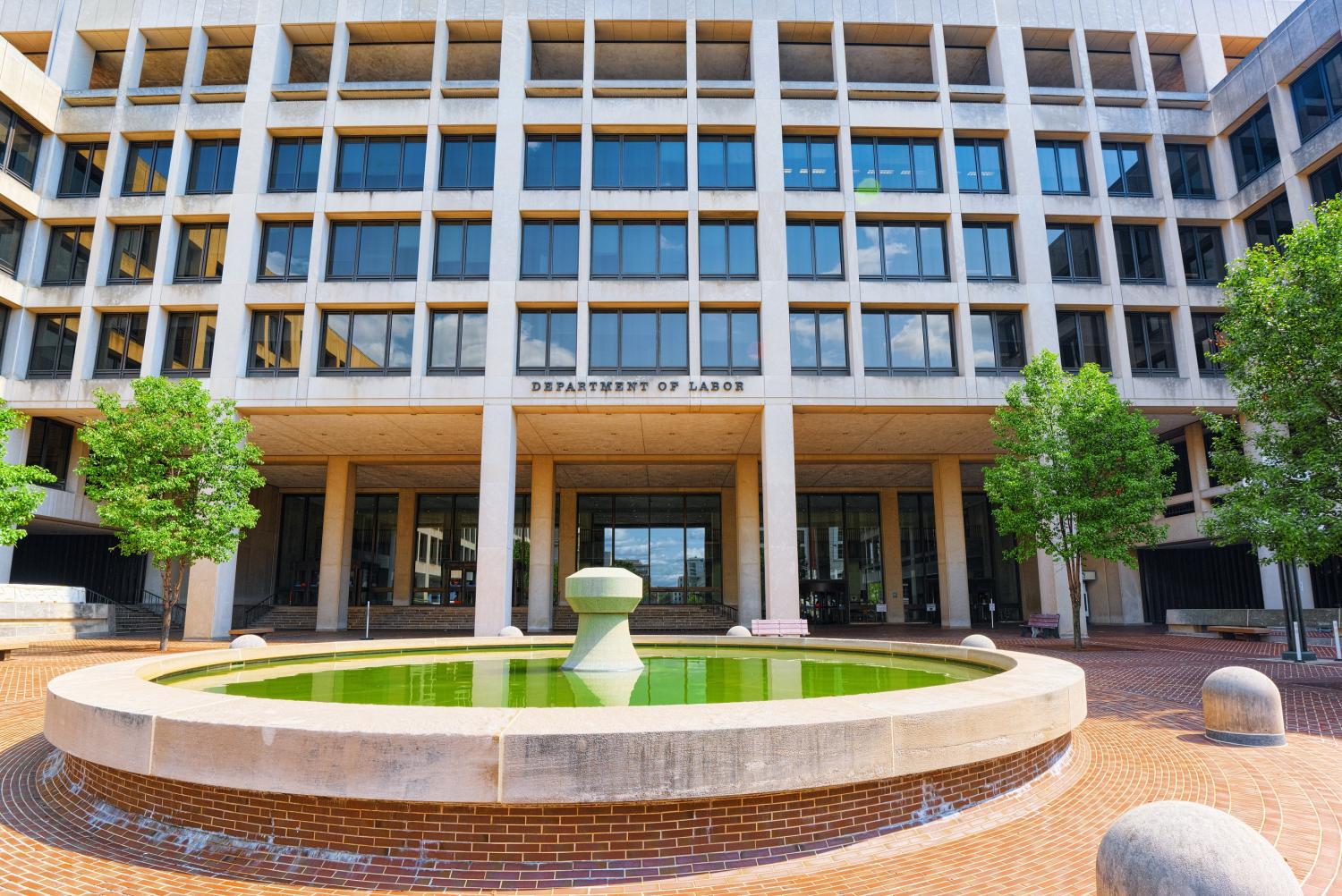The United States is pulling apart economically. Some regions continue to face vastly different economic outcomes, and there are troubling signs on the state of manufacturing in the Midwest that suggest further disparity. New work by my colleagues Mark Muro and Jacob Whiton shows an explicitly partisan tilt to this divergence, with congressional districts represented by Democrats experiencing rapid economic growth over the past decade, while Republican districts stagnate.
This divide is likely one reason for a new push in the Senate to stimulate job growth in less prosperous U.S. regions by relocating federal agencies from Washington to “the heartland.” While the proposal is misguided in several ways, it nonetheless raises useful questions about what role federal jobs might play in dispersing economic activity more widely.
The newest push to deconcentrate federal employment
Sponsored by Senators Josh Hawley (R-Mo.) and Marsha Blackburn (R-Tenn.), the Helping Infrastructure Restore the Economy (HIRE) Act would require the federal government to relocate the headquarters of several executive branch agencies (if it does not otherwise abolish or merge them) to states that have “experienced substantial economic distress during the past 10 years.” The bill designates 10 specific agencies and their proposed destination states; not surprisingly, Missouri and Tennessee are among those eligible for agency relocations (see figure below).

One important backdrop for Hawley and Blackburn’s proposal is the recent relocation of the U.S. Department of Agriculture’s Economic Research Service (ERS) to Kansas City. While the Trump administration heralded the move as a cost-saving measure and a chance to bring ERS employees closer to the “stakeholders” they study, the relocation order paralleled a White House proposal to drastically shrink the agency’s size, as well as the administration’s concerns that its own policy proposals were at odds with the service’s research findings. Ultimately, ERS was forced to delay or terminate hundreds of millions of dollars of research when 80% of its staff left the agency rather than relocate. Democratic lawmakers, meanwhile, are trying to use the appropriations process to block the agency’s move. (This being Washington in 2019, the debate over the ERS move occasioned a Twitter war in which Senator Hawley featured prominently.)
Although it is two Republican senators who are co-sponsoring the HIRE Act, the idea of using federal employment to stimulate economically lagging regions isn’t an expressly partisan one. In West Virginia, the presence of the U.S. Customs and Border Protection Advanced Training Center, the U.S. Coast Guard Operations Systems Center, and a mammoth IRS computing facility reflects not only proximity to the Washington, D.C. area, but also the powerful influence late Democratic Senator Robert C. Byrd wielded in locating federal jobs in his home state. More recently, progressives such as Vox’s Matthew Yglesias and Democratic presidential candidate Andrew Yang have embraced the potential of agency relocation to stimulate heartland economies. (Yang seems to have taken up Yglesias’s specific proposal to move the National Institutes of Health to Cleveland.)
Most federal employees don’t work in Washington
The number of federal civilian workers has been relatively stable since 1970, and has even fallen steadily as a share of the total U.S. workforce (in part due to a rise in federal contracting). But the federal government still employs a significant number of Americans—2.8 million people in all.
Most of those federal workers, however, do not live in the Greater Washington area. As of fiscal year 2017, about 280,000 nonseasonal, full-time federal workers lived in the Washington, D.C. metro area. That represented only 15% of all such workers nationwide. The other 85% are distributed around the country, with large numbers at agencies such as the Veterans Health Administration (328,000), the Internal Revenue Service (52,000), the Social Security Administration (49,000), and the Federal Aviation Administration (38,000) working outside the District of Columbia, Maryland, and Virginia. These individuals carry out their duties in regional field offices and project sites, with most ultimately reporting up to a headquarters in the capital. The notion that all federal employees are “creatures” of official Washington, or that, in Senator Hawley’s words, “Every year Americans’ hard-earned tax dollars fund federal agencies that are mainly located in the D.C. bubble,” misrepresents reality.
Relocation may be worth considering for some federal agencies
This doesn’t mean that the status quo isn’t worth examining. A large number of federal employees do work in and around the nation’s capital, which is an expensive place to do business. According to the Bureau of Economic Analysis, among 382 U.S. metropolitan areas, Greater Washington, D.C. registers the 10th-highest prices for goods and services. Employing a large workforce in the Washington area means the federal government bears higher-than-average costs for salaries, space, and supplies, as well as for contracts to companies that locate in the region to be near the agencies they service.
Many of these federal employees clearly do need to work near the seat of national government. Those workers who liaise routinely with the White House, other executive agencies, and Capitol Hill can do their jobs much more effectively in Washington, D.C. than elsewhere. Cabinet secretaries and their offices, government commissions that frequently report to Congress and the administration, and headquarters for geographically distributed agencies all, too, have strong arguments for being in Washington.
The case for other workers and agencies to continue to locate in Washington is not always as clear. As Yglesias notes, the National Institutes of Health (NIH) employs about 17,000 people in Bethesda, Md., just outside the District. Most of the agency’s professionals, who fund and conduct cutting-edge health research, have no day-to-day need to be near the corridors of power in the federal city. NIH is in Bethesda because in 1944, Congress provided funding to build a research hospital there. But the agency might just as easily have grown somewhere else. The Centers for Disease Control and Prevention (CDC), for instance, employs about 8,000 workers in Atlanta. The agency is located there because its forerunner program focused on preventing the spread of malaria in the U.S. South. In 1947, the head of Coca-Cola organized a deal with Emory University to establish the CDC next to its campus, where it still operates today.
What agencies might be candidates for relocation out of the Washington area? Data from the Office of Personnel Management point to many nondefense-related agencies and subagencies that employ significant numbers of workers in the District of Columbia and its suburbs, but may not require regular access to those environs. Table 1 lists a sampling of such agencies, which are either independent or have a relatively autonomous relationship with their cabinet agency “parent” (many are located in the Maryland and Virginia suburbs of Washington, D.C.), and currently have at least 1,000 employees in the Washington, D.C. area.

Being thoughtful about relocation
To be sure, many of these agencies may possess strong rationales for retaining an address in Greater Washington. The broader point is that, especially in an age of enhanced government telecommunications and remote-work capacity, it is appropriate to examine what federal functions must be conducted in the nation’s capital.
At the same time, the administration and Congress should focus not only on the “push” (read: cost) factors for relocation, but also on the “pull” factors that may argue for relocating agencies in certain parts of the country. Those factors should go beyond local economic distress, into how the nature of the agency’s work aligns with existing industry clusters in potential destination regions. One reason Yglesias and Yang argue that NIH should move to Cleveland is that there are major institutions (e.g., the Cleveland Clinic) and biosciences companies already there whose presence would complement NIH’s. That thinking offers a sharp contrast to the HIRE Act, which would not only direct specific agencies to predetermined states (based on what factors, I’m not sure), but also require the executive branch to locate them away from big cities, and to consider only the state of local infrastructure—not industry alignment—in siting decisions.
Community size and industry alignment matter for economic development potential because people matter for agency success. Regions that don’t have—or can’t marshal—workers with the specific skills that agencies require would be poor candidates for relocation. For instance, 6,000 of NIH’s 17,000 Bethesda-based employees and 900 of the National Institute for Standards and Technology’s 2,400 Gaithersburg-based employees have doctoral degrees. Likewise, many Virginia-based Patent and Trademark Office employees and D.C.-based Securities and Exchange Commission employees are experts in their respective legal fields. The specialized knowledge such workers possess may be difficult to locate just anywhere. The supply of similar experts in potential relocation regions, and/or the ability of those regions to attract current agency experts, should be key considerations.
That’s all to say that there are smarter ways to approach relocation. Following an extensive independent review in 2004, the U.K. government undertook a “decentralization” of its employees away from expensive and prosperous Greater London to many of the country’s economically lagging regions over the past decade. Today, its Office for National Statistics sits in Wales, and much of the BBC is located in Greater Manchester. The review set a target and criteria for relocating 20,000 public-sector positions out of Greater London. Ultimately, the government moved more than 25,000 jobs over the succeeding decade. Subsequent research found that the relocated jobs had positive effects on local services employment. As the Centre for Cities observed in 2010, relocations should be based on sound analysis rather than marketing campaigns conducted by suitor cities (something for which U.S. cities are even more famous than their U.K. counterparts), and that public-sector relocations should be careful not to displace private-sector investment. The U.K.’s experiment with government relocation suggests that an independent commission and long-term timelines can help set the conditions for success.
In writing about economic development, Brookings Metro always stresses the importance of attracting and growing “good” jobs that build on community assets. In that respect, it’s right for our federal government to consider how, as a good-jobs employer, it might augment economic development in America’s struggling regions. Taking some of the politics out of the process, and adopting a thoughtful long-term vision, could help ensure that relocation ultimately benefits both a wider set of communities and the American public as a whole.
Thanks to Sarah Crump and Reniya Dinkins for research assistance, and Luisa Zottis for graphics assistance.
The Brookings Institution is committed to quality, independence, and impact.
We are supported by a diverse array of funders. In line with our values and policies, each Brookings publication represents the sole views of its author(s).






